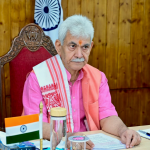A decade of reforms in Indian Public Broadcasting merit a critical examination for not only the transformation that has taken place since Prime Minister Narendra Modi took office but also for the pivotal role public service media is poised to play in India’s developmental journey towards achieving a ‘Viksit Bharat’ by 2047.
If the period between 2004 and 2014 when the UPA governed India, is often referred to as the ‘lost decade’, it is especially true of public broadcasting given the lackadaisical approach of the then government towards undertaking any meaningful reforms. Doordarshan and All India Radio remained trapped in a time warp of status quo as organisations with a 20th century mindset incapable of meeting the challenges of the 21st century. However, since 2014, thanks to the stewardship of Prime Minister Narendra Modi, Prasar Bharati embarked on an unprecedented journey of public broadcasting reforms the impact of which was best felt when the COVID-19 pandemic struck. This transformation has been not just about technological upgrades but based on a vision for how broadcasting must evolve to meet the challenges of the internet era.
The transformation witnessed since 2014 is staggering both in scale and its complexity. The reach of DD FreeDish, India’s largest free-to-air DTH platform, has doubled, serving over 45 million families. It became a lifeline during the COVID-19 pandemic to students in every corner of India. The availability of more than 30 educational channels through DD FreeDish meant critical access to educational content to millions of students who could overcome limitations of internet access and did not need to depend on computers for remote classes. FreeDish’s role in saving the academic year for these millions of students was lauded by global media outlets that observed how India leveraged public broadcasting effectively to save the academic year. The role of Doordarshan in engaging citizens across India through the COVID-19 lockdown through the broadcast of epics Ramayan and Mahabharat caught the eye of International Media such as the Wall Street Journal. The viewership record established by Ramayan will be a high benchmark for Indian Television for a long time to come.
The most significant reform in public broadcasting undertaken over the past ten years has been the phasing out of over 1200 obsolete analog terrestrial television transmitters. It was ironical that despite television viewing across India shifting to cable and satellite, for more than a decade there was no effort to phase out these obsolete transmitters which had nearly zero viewership. With this phase-out, Prasar Bharati has not only saved significant expenditure on electricity but it has also freed up valuable spectrum for 5G and rural communication services. Redeploying the manpower from these transmitter sites towards managing its fast expanding FM radio network, Prasar Bharati also undertook long overdue convergence between its television and radio operations breaking the silos within which Akashvani and Doordarshan had long operated.
The expansion of Doordarshan’s satellite channels from 23 in 2017 to 36 in 2021, including dedicated channels like DD Kisan, underscores a commitment to diversified content catering to the needs of every Indian. Similarly, Akashvani’s footprint expanded significantly, ensuring that the voice of India reached the farthest corners of the country and beyond.Digitalization and the integration of IT systems across Doordarshan (DD) and All India Radio (AIR) have made public broadcasting more accessible and inclusive. The introduction of sign language commentary for major events and the digitization of archival content preserve India’s rich cultural heritage while making it accessible to all.Internationally, DD India’s growth as a channel has been remarkable, becoming the number one English news channel in India and expanding its global footprint to over 190 countries through a combination of platforms such as myK in Korea, YuppTV in North America apart from YouTube. This international outreach is critical for projecting India’s perspectives and values on the global stage.
Financial sustainability has also been a focus, with Prasar Bharati achieving a 13% revenue growth in 2021-2022 from commercial operations. This financial prudence, coupled with technological advancements, established a strong foundation for a roadmap towards a self-sustaining public broadcasting ecosystem.The strategic interventions, like broadcasting weather reports for Pakistan-occupied Kashmir and expanding the digital footprint through platforms like the NewsOnAir App, reflected a bold and innovative approach to leveraging public broadcasting for national interest and global outreach.
The impact of a decade of reforms in public broadcasting is clearly visible with the Reuters Institute of Journalism Studies in its annual surveys ranking Doordarshan and Akashvani as the most credible and trustworthy sources of news in India. Yet, these reforms are not an end but a beginning.
To realize Prime Minister Modi’s vision of a ‘Viksit Bharat’ by 2047, public broadcasting must continue to evolve. It must serve as a platform for education, innovation, and dialogue, bridging the digital divide and ensuring that every Indian, irrespective of their socio-economic status, has access to information, education, and entertainment.This becomes apparent when one considers the diversity of India’s languages across regions many of which are either underserved or unserved by the private media. Akashvani’s services spanning more than a hundred languages and dialects are a reminder of how challenging it is to disseminate developmental messages to the remotest regions of India in a consistent and accurate manner. Through Prime Minister Modi’s Mann ki Baat, Akashavani has not only amplified developmental messaging across India but it has also contributed to the technologies of future. Today AI models are being developed for these languages and dialects by leveraging the corpus of Mann ki Baat recordings and the archives of Doordarshan and All India Radio.
The journey from ‘Sabka Saath, Sabka Vikas’ to ‘Viksit Bharat’ is long and challenging, but with the strategic use of public broadcasting, India is poised to achieve this vision, ensuring that the voice of every Indian is heard, and the story of India’s development reaches every corner of the globe by amplifying these billion voices.
(The Author is Former CEO of Prasar Bharati)









